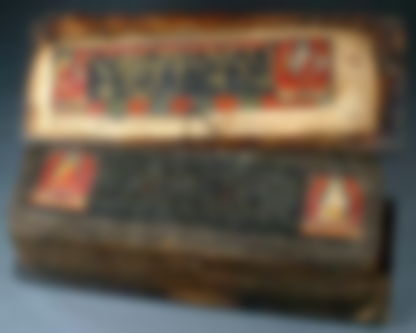

Review on the history, significant persons and important texts of Sowa Rigpa, made by the oldest Institute of Tibetan Medicine Men-Tsee-Khang.
The course is organized by SKY St. Petersburg as an additional part to “Four Tantras” (rGyud bZhi) training and will be delivered in English with consecutive Russian translation by Asya Teplyakova.
Сourse will continue 24 hours during 6 days.
on 5, 6, 12 of February 10:30 — 14:30 (Moscow)
on 1, 2, 3 of May 10:30 — 14:30 (Moscow)
Review on the history, significant persons and important texts of Sowa Rigpa, made by the oldest Institute of Tibetan Medicine Men-Tsee-Khang.
It is going to be a unique class, first of a kind that will give a full and clear list of books to be studied. Review of these texts will give clear understanding of what and how should be studied to learn Tibetan medicine well.
Though the lectures from Men-Tsee-Khang prefer to speak Tibetan, we enquired for a class in English to make it available for international students.
After the class we are going to publish all presentations and the list of literature at www.sorig.info.
All participants will receive course recordings.
History of Tibetan Medicine
The history of the subject is usually a mandatory course for any technical or medical university. This is not a whim of university administration, but a necessary part of studies for the proper education of conscious specialists. Understanding of how and under what conditions and circumstances certain knowledge has developed gives a person the right key to put this knowledge into practice.
Most of us, practitioners of Tibetan medicine, are only familiar with its history only through scanty prefaces from popular publications. That´s why we can say without exaggeration that the history class we asked Men-tsee-khang for is going to be the first ever consistent course on this subject in the West.
We asked the teachers that are preparing this course for us to pay special attention to the description and review of the content of the texts.
Everyone knows that, fortunately for us, in Russia sowa rigpa has a long history and a lineage in the Buryat tradition, which in turn is closely connected to the Mongolian tradition. Traditionally, sowa rigpa was studied by doctors in Tibetan language, and there were only few texts, like rGyud bZhi and some others mostly written by Mongolian doctors. Xylographs were made in monasteries, and at the beginning of the 20th century many editions were destroyed or taken to St. Petersburg, where they are in a deplorable state, unsorted, undescribed and uncatalogued until today. Huge amount of work on study and preservation of the texts is done by employees of the Siberian Branch of the Russian Academy of Sciences in Ulan-Ude, but what has been done by these enthusiastic people is only a small fraction of what is needed to be done. There is also no chance to even talk about a full catalog. Recently, after receiving a presidential grant, the Aginsky datsan purchased a whole library of texts, but all of them require description and translation.
In this upcoming course, Men-tsee-khang will mainly use Jampa Tinley’s text Gso rig lo rgyus. This treatise was only partially translated into Russian by the scientists from Ulan-Ude. English translation does not yet exist.
As for the translations of Tibetan texts into Russian, there are only few of them. Andrei Kosoburov, a tireless associate, made an invaluable contribution to the development of Sowa Rigpa by translating from Tibetan about ten books, like Lhantab and modern textbook from Lhasa -”New dawn” and by writing his famous Encyclopedia and Recipe book. By his work Kosoburov practically set the standard for translating medical texts from Tibetan, so now the Tanaduk Publishing House consistently sticks to this standard.
The first full Russian translation of the rGyud bZhi by Dashiev, inspite of its great significance, contains many inaccuracies and terminological mistakes. At this moment Anastasia Teplyakova is working on a new translation of rGyud bZhi, which can be used as a professional textbook for doctors and students of Sowa Rigpa. The translation can be found at www.sorig.info.
Anastasia has also translated into Russian another significant book — Drops of Nectar — Selected Notes on the Essentials for Young Doctors, better known as ཀོང་སྤྲུལ་ཟིན་ཏིག (Kong sprul zin tig "Kongtrul zintig") — the main medical text of Jamgon Gyatso (1813-1899).
We are happy to announce that the course "History, people and texts of sow rigpa" will be translated from English by Anastasia Teplyakova. This is very important, since most of what is going to be discussed in the classroom used to be pronounced only in Tibetan before, therefore we will have difficulty to sort it out without a specialist of this level.
A refund is possible 2 weeks before the start of the course in full amount, 50% of cost in a week before the begining, the cost is not refundable for 3 days before the start.